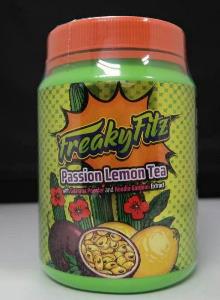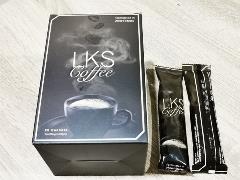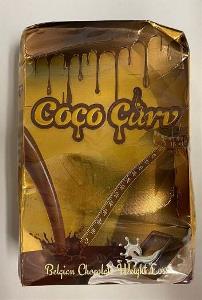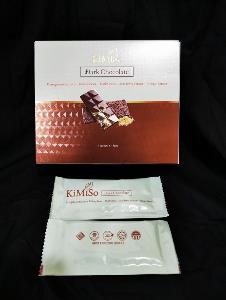Characteristics of sibutramine-induced adverse events due to adulterated products
Sibutramine was previously available in Singapore as a prescription-only medicine and was indicated as an adjunctive therapy for the management of obesity. Since 2010, it has been withdrawn in Singapore and other countries including the United States and the European Union due to an increased cardiovascular (CV) risk (e.g. myocardial infarction and stroke). Despite this, sibutramine continues to be used illegally in adulterated products, especially slimming products, which claim to be safe and effective for weight loss. Unfortunately, some consumers unwittingly fall prey to such products and experience adverse events (AEs) after consuming them. From January 2006 to October 2020, HSA has received 20 AE reports associated with sibutramine-adulterated products. Based on an analysis of these reports, we would like to present the characteristics of sibutramine-induced AEs, in particular psychiatric and CV AEs.
Mechanism of action of sibutramine
Sibutramine acts centrally to inhibit serotonin and norepinephrine reuptake to enhance satiety, and acts peripherally to increase metabolic rate, thermogenesis, and energy expenditure by stimulating β3-adrenergic receptors. This sympathomimetic activity of sibutramine causes a rise in heart rate and blood pressure, which can increase the risk of adverse CV outcome in susceptible patients.1 To a lesser extent, sibutramine also inhibits the reuptake of dopamine. It has been suggested that the resultant accumulation of dopamine at the synaptic clefts, particularly when high doses are used, can increase dopaminergic transmission and lead to potential psychomimetic effects, in line with the dopamine hypothesis of psychosis.2,3
Adverse event reports with sibutramine
Of the 20 AE reports associated with products adulterated with sibutramine, the two most common AEs were psychiatric (eight reports) and CV (11 reports) in nature. Five of these reports included both psychiatric and CV AEs. Other AEs that were reported include thyrotoxic symptoms, hypercortisolism and jaundice (one report each). The remaining three reports included hypoglycaemia, which was attributed to glibenclamide, another adulterant found in the products.
(a) Psychiatric AEs
In the cases which reported psychiatric AEs, the patients’ ages ranged from 16 to 37 years old and most were females (75%). There was a wide range of symptoms and severity reported for these AEs, namely psychosis, insomnia, anxiety, labile mood (e.g. elation, irritability, fear), abnormal behaviour (laughing inappropriately, disorganised behaviour), obsessional thoughts and suicidal ideation. In cases where psychosis was reported, hallucinations were often auditory in nature and sometimes accompanied with delusions (e.g. grandiose delusions).
The time-to-onset of symptoms were also wide-ranging, from one day to 1.5 years, with a median of 22 days. In a case with relatively quick AE onset, a patient in her 20s experienced insomnia, palpitations and severe perspiration one day after taking the adulterated slimming product ‘Bello Smaze’. She also experienced suicidal thoughts on the fourth day. She had recovered after stopping the product.4 In another case, the onset of psychotic symptoms only became apparent three months after the patient started taking ‘Freaky Fitz’, another sibutramine-adulterated product. The patient had taken the product intermittently and had a genetic vulnerability with family history of psychosis.
The doses of sibutramine taken (where sibutramine quantification has been conducted by HSA) ranged from 9.3 to 49 mg daily. The recommended dose of sibutramine for adjunctive management of obesity was 10 to 15 mg daily. All the patients did not have any pre-existing psychiatric conditions, except for the above case where the patient had genetic vulnerability with a family history of psychosis. Five of the patients were treated for their AEs and the treatment involved antipsychotics, antidepressants and supportive therapy. Two of the patients recovered fully upon stopping the product, while the others were yet to recover from the AEs at the point of reporting to HSA.
(b) Cardiovascular AEs
In these reports, the patients’ ages ranged from 21 to 52 years old and they were mostly female (81%). All the patients were reported not to have any comorbidities, except for one patient who had diabetes mellitus, hyperlipidaemia, hypertension, psoriasis and asthma. The most commonly reported CV AEs were palpitations, tachycardia, chest pain and tightness. The daily dose of sibutramine consumed in these cases ranged from 10 to 49 mg. The time-to-onset of the AEs was relatively short, with a median of 8.5 days (range: within hours to two years). In most of the cases, the symptoms experienced (e.g. sudden chest pain, tachycardia) were significant enough for the patients to consult a doctor. Four of the patients were hospitalised. In one particularly serious case, a patient in her 50s took an adulterated slimming product called ‘BB Body’ for three months and developed life-threatening ventricular tachycardia and loss of consciousness. She was intubated and underwent a cardioversion procedure. Subsequently, she was diagnosed with non-ischaemic cardiomyopathy, implanted with a defibrillator and managed with heart failure medications.4,5
Current trends in adulterated slimming products
With the increasing popularity of social media and e-commerce platforms, consumers can easily purchase slimming products online. Some of these products may be adulterated with sibutramine and claim to contain natural ingredients with promises of quick weight loss. Consumers may be misled to believe that these products are both effective and safe. Food-like presentations of adulterated slimming products such as chocolates and beverages also mislead consumers into thinking that such products are safe for consumption. Some of the adulterated products that were detected by HSA are shown in Figure 1.4
Figure 1. Adulterated products containing sibutramine marketed as food products such as chocolates and beverages


“Freaky Fitz” and “Wholly Fitz” (marketed as Passion Lemon Tea)

“LKS Coffee”



“Serifa Beauty SolidMolid”, “Coco Curv” and “Choco Fit” (marketed as chocolate drinks)



“KiMiSo Dark Chocolate” and “Mone Macha Cocoa”
HSA’s advisory
This review characterises the reported AE profile of sibutramine and serves to alert healthcare professionals of possible sibutramine-induced AEs in patients with similar clinical presentations who may have unwittingly consumed sibutramine-adulterated products.
References
- Int J Obes Relat Metab Disord 1998; 22 Suppl 1: S30-5; discussion S36-7, S42
- Prog Neuro-Psychopharmacol Biol Psychiatry 2010; 34: 1359–1360
- J Clin Psychopharmacol 2007; 27: 315–7.
- https://go.gov.sg/hsa-press-releases
- HSA ADR News Bulletin 2019 Dec; 21: 6-7
Healthcare professional, Industry member, Health supplements
Published:
Safety Alerts